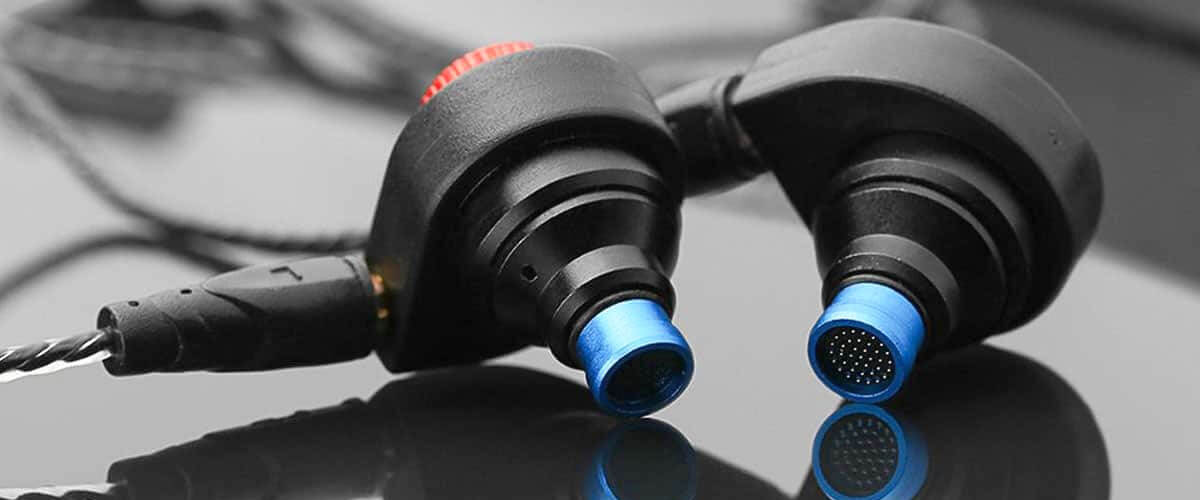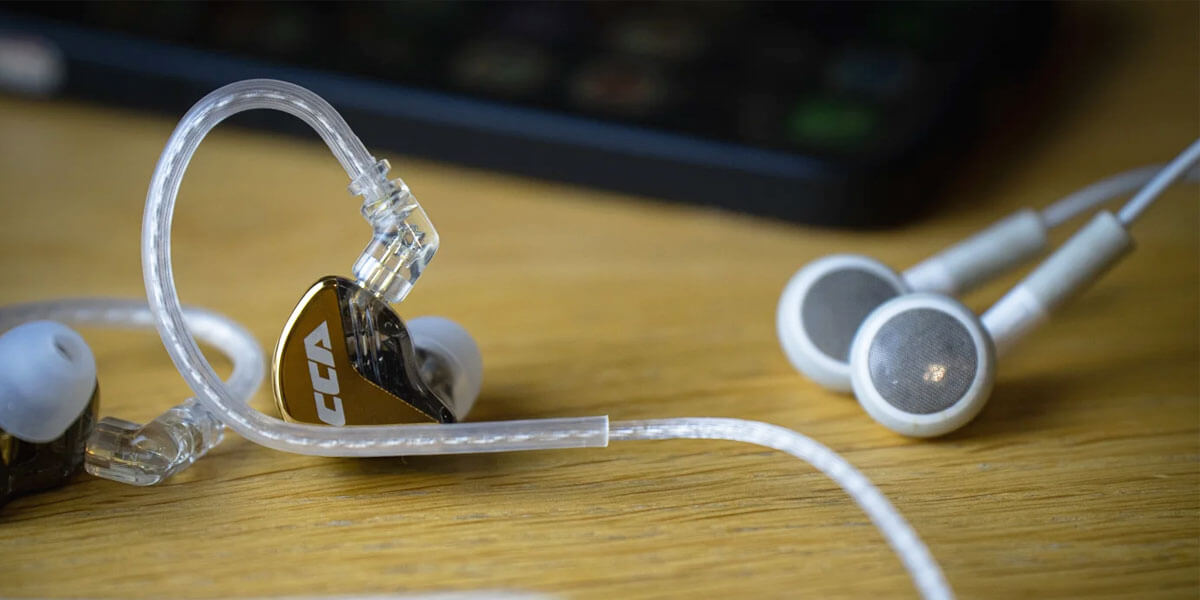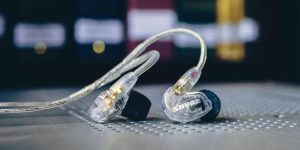In-ear monitors vs. earbuds may appear similar at first glance, but they serve distinct purposes and are designed for different applications. In-ear monitors cater to the needs of professional musicians and performers, providing them with audio monitoring tools, while earbuds are geared toward everyday consumers seeking an enjoyable listening experience. While both types of headphones are worn inside the ear, it’s essential to recognize their differences in functionality and usage, which you’ll learn from this article!
What are in-ear monitors (IEMs)
In-ear monitors are specialized earphones for professional sound monitoring purposes. They provide a personalized and accurate audio monitoring experience for musicians and performers.
The primary purpose of IEMs for sound monitoring in professional music, both on stage and in the studio, is described in detail next:
- Personalized monitoring. Each performer can have their own mix of instruments, vocals, and other audio elements to stay in sync and maintain proper timing.
- Clarity and detail. They enable musicians to hear the subtle nuances in their performance and the overall mix, allowing for precise adjustments and improvements.
- Noise isolation. By creating a physical seal within the ear canal, IEMs block out external noise from the stage or studio environment.
- Feedback prevention. With IEMs, musicians can reduce the need for traditional stage monitors, minimizing the risk of feedback and ensuring clean and controlled audio monitoring.
- Mobility. It allows musicians to move freely while maintaining consistent audio monitoring.
- Hearing protection. Providing noise isolation and reducing reliance on loud stage monitors minimizes the risk of long-term hearing damage caused by prolonged exposure to high sound levels.
Exploring earbuds
In-ear headphones, or earphones, are compact and lightweight audio devices that consist of small speakers or drivers that deliver sound directly into the listener’s ears.
The general use of earbuds for personal listening offers numerous advantages and convenience in everyday scenarios. I’ll try to reveal 5 key points:
- Portability. They can easily fit into pockets, bags, or purses, making them convenient for travel or any on-the-go activities. Their small form factor allows for easy storage.
- Ease of use. They typically have a simple plug-and-play mechanism that connects to various devices, such as smartphones, tablets, laptops, or portable music players, through standard audio jacks or wireless connectivity.
- Affordability. Earbuds are available at a wide range of prices, making them an affordable option for personal usage.
- Convenience. Whether you enjoy music during workouts, commuting, or relaxing at home, earbuds provide a portable and hassle-free audio solution.
- Privacy and focus. Using earbuds, you can isolate yourself from your immediate surroundings, reducing external distractions.
The portability, simple use, and affordability of earbuds make them a popular choice for personal audio listening, catering to the needs of users in various everyday situations.
Difference between IEM and earbuds

When comparing earbuds vs. in-ear monitors, it becomes evident that the former is geared toward casual listening while the other is designed for professional sound monitoring. However, let’s take a closer look at the differences between IEM and earbuds.
Sound quality and accuracy
The key distinction between IEMs and earbuds lies in their intended use, with IEMs providing accurate sound monitoring for professional musicians, while earbuds cater to the general public for casual listening enjoyment.
IEMs often have multiple drivers that handle different frequency ranges, resulting in a more balanced and accurate audio experience.
While still capable of providing decent sound quality, earbuds generally emphasize convenience and portability rather than the utmost audio accuracy. Headphones often accent bass and may apply sound processing to boost certain frequencies.
Sound isolation and noise reduction
Due to their design and the creation of a seal in the ear canal, IEMs offer superior noise isolation compared to earbuds. This makes them more suitable for use in noisy environments, such as live performances or recording studios, as they can effectively block out external sound sources. The soundproofing reduces the need for higher volume levels, resulting in less auditory fatigue.
Headphones vs. IEMs, on the other hand, provide minimal passive noise isolation due to their looser fit, and they may not be as effective in reducing external noise.
Customization and personalization
IEMs offer the advantage of customization and control over the audio mix. Musicians using IEMs can have personalized mixes, allowing them to hear their instruments or vocals at desired levels. This level of customization is not typically available with standard earbuds, which provide a fixed audio output without the ability to adjust the size, fitting, or individual sound elements.
When considering earbuds vs. IEM, it’s clear that the first type prioritizes convenience and portability for everyday personal listening, whereas the IEMs focus on precise sound monitoring for professional musicians on stage or in the studio. Ultimately, both IEMs and earbuds enhance our listening experiences, ensuring that the joy of sound is accessible in various aspects of our lives!





